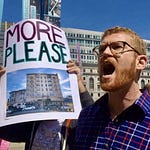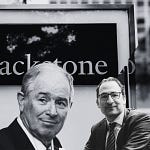Mike Fellman, the voice of realism behind the Housing Hell Substack and a modest following on X, unflinchingly dissects the housing market through the lens of capital markets rather than mainstream platitudes. Mike is an economist, chess olympian, and real estate finance expert. He formerly worked at Freddie Mac and the IMF, and maintains that the current housing saga is driven far more by interest rates and investor dynamics than by land use regulations or any headline “shortage.”
Notably, Joe Weisenthal of the Odd Lots Podcast recently endorsed Mike, tweeting: “Follow @MikeFellman. I agree with everything he says on every topic.”
In our conversation, we pressed into the mechanics of density (why it only pencils when prices are already high), Japan’s zoning-and-asset-bubble paradox, and the blunt reality that “housing is just inequality — it always has been.” We also dug into the future of Fannie and Freddie: privatization, MBS spread implications, the stability of the 30-year fixed mortgage, and whether a “golden share” model could preserve public oversight while introducing private discipline.
0:00-3:30 — Framing the Question: “What does a housing crisis even mean?”
The conversation begins with a contrarian reframing: housing is not universally in crisis. It depends entirely on who you’re talking about
Roughly 63–64% of U.S. households are homeowners, and to that majority, the last several years look like an investment windfall, not a crisis
Many renters are not rent-burdened; their incomes rose proportionally with rents in nominal terms. Fellman emphasizes that the “crisis narrative” is often overstated
Yet a small slice of renters are severely rent-burdened—so the hardship is real, but not system-wide
A key conceptual distinction surfaces early: market clearing does not imply optimal allocation. Even when everyone in the market finds a place to live, the distribution of who gets to live where can be suboptimal for growth and human capital formation
3:30-8:30 — Misallocation: When zoning forces housing into the wrong places
The introduction of YIMBY thinking enters the chat: upzoning = more supply → lower prices → abundance. But Fellman challenges this as theoretical, not empirical
Intracity land-use restrictions (height limits, zoning carve-outs, discretionary approvals) create spatial misallocation of structures
Even if units eventually get built elsewhere, we lose output because homes are not located where they generate maximal social/economic value
Counterintuitively, if we optimized location, prices would rise, not fall, because those homes would sit on more valuable land
Fellman’s point attacks a core YIMBY axiom: supply won’t fix affordability if demand is wildly concentrated
8:30-12:30 — Density Economics: “Density works because prices are high”
A masterclass in cost structure:
Going denser increases cost per square foot, even if cost per unit declines
Taller buildings require steel, concrete, elevators, sprinklers, specialized labor—none of which scale linearly
Density therefore requires end consumers willing to trade space for location, e.g., “live smaller and pay more per square foot.”
Fellman destroys the oft-cited statistic that “80% of metro area land is zoned single-family”:
Most of that land couldn’t economically support higher density anyway, regardless of zoning
In short: YIMBY deregulation is necessary, but not sufficient. Construction follows capital flows and demand intensity, not zoning permissiveness
12:30-20:00 — Japan & the Myth of Zoning-Driven Abundance
The conversation shifts to Japan—a darling of American abundance discourse—often portrayed as the YIMBY utopia
Fellman dismantles the myth:
Housing is an asset with a rate-of-return tradeoff. Whether renting or owning, you’re moving capital between asset classes
Tokyo’s housing did increase in supply, but prices still rose more than 10× between ~1975 and 1990, because the entire Japanese asset market was inflating
Japan reformed zoning (8→12 zones) and reduced local control long before the bubble popped
Prices later stagnated for two decades not because of zoning, but because:
asset returns collapsed
inflation was zero
and capital had nowhere to go
When the government reflated the economy—fiscal expansion + QE—prices rose again
Zoning permissiveness didn’t drive affordability. Asset market cycles did.
20:00-28:00 — The Real Driver: Inequality, not zoning
Fellman lays down his thesis:
“Housing is just inequality—always has been, always will be.”
The problem isn’t insufficient supply; it’s that some people lack the income to buy into high-value locations
If we believe every worker should live near their job (e.g., “a janitor should be able to walk to work in Boston”), that is not a market outcome—it is a redistributive preference
Redistribution options span a spectrum:
fully public housing
vouchers (Section 8)
Singapore-style public development with private leasehold
subsidized home finance via the GSEs
Zoning tweaks affect the location of pain, but inequality determines the existence of pain
28:00-41:30 — Fannie & Freddie: Abundance via finance, not concrete
Crucial insight: the U.S. already practices large-scale housing redistribution—through the mortgage market
Subsidized home financing through the GSEs dramatically expands who can become a homeowner, which reduces inequality in the distribution of real estate
Without Fannie/Freddie, homeownership would collapse, and renting would surge—resulting in a more unequal distribution of wealth
“We decided we don’t like that outcome—and built a system to change it.”
This point reinforces a deep theme: abundance in the U.S. isn’t production-driven, it’s credit-driven
41:30-46:30 — Privatization: What happens if Fannie & Freddie go private?
If privatized, agency MBS spreads would widen because investors would require compensation for credit risk
Fellman questions why one would privatize while preserving a government guarantee—letting shareholders keep profits while taxpayers absorb losses
A creative structure emerges:
Government retains a non-economic “golden share” (voting rights, board seat) to enforce duty-to-serve, hold down g-fees, and ensure lending in low-value areas
Private capital would operate the enterprises, but the public mission would stay intact
46:30-53:30 — System Stability, the 30-Year Mortgage, and Macroprudential Power
Fellman: the 30-year fixed mortgage is a stabilizing force, not a distortion. Removing it would be politically explosive
Pre-2008 capital ratios were ~0.45%. Today they’re ~4.25%
Fannie/Freddie act as counter-cyclical stabilizers:
tighten credit during booms
expand it during downturns
If privatized, this macroprudential steering disappears
53:30-End — Land-value taxation, Fed blind spots, and a final critique of abundance-optimism
The interview ends on land-value tax reform
In theory, taxing cash flows pushes down home prices
But equilibrium adjusts: prices fall, carrying costs rise—“it washes out”
Fellman notes the Fed denies that its monetary actions shape housing, even though housing is the most interest-rate-sensitive sector of the economy
A provocative idea emerges: a separate monetary authority just for housing, because housing policy and monetary policy are already intertwined
Overarching takeaways
Housing isn’t primarily a supply problem. It’s a capital allocation problem. Housing prices respond more to asset cycles and interest rates than zoning codes. Japan proves this: permissive zoning, sky-high prices, long stagnation, then reflation → rising prices again. Supply matters, but capital markets matter more.
Density is a symptom of high prices, not the cure for them. YIMBY logic says: upzone → more supply → lower prices → abundance. Feldman’s empirical framing says: prices must already be high enough to justify density.
Zoning reform improves allocation of structures, but not necessarily affordability. Even if deregulation enables supply to flow into high-value locations, those locations are expensive precisely because demand is strong. Spatial optimization can increase prices because units get built where willingness-to-pay is highest.
Equality of access requires redistribution, not Zillow-based urbanism. If society wants janitors living in Boston or teachers living near Palo Alto, that requires transfer mechanisms (vouchers, subsidies, public finance)—not just permissive zoning.
GSEs are the U.S.’s largest redistributive housing program. Mortgage subsidies equalize homeownership opportunity. Privatization risks transforming a public equality instrument into a private profit engine.
Finance is the real “abundance agenda.” America achieves abundance in housing not through production like Tokyo, but through credit democratization. The abundance movement cares about more units. The market cares about more return on capital.
Thank you!
… to Casilliac, Scott C. Rowe, and many others who tuned in live. Download the Substack app to tune in to future Boyd livestreams:
Additionally, if you object to any of Mike’s claims or think he (or Boyd) is misreading the current housing landscape, we’d love to hear your perspective 👇
















